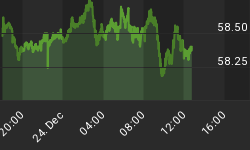It appears to be increasingly evident that the recent turmoil in the financial markets was not an aberration. John McFarlane, former ANZ chief executive, noted that 30-day bank bills were rising. Last week the bill rate exceeded 7 per cent as against the cash rate of 6.5 per cent, giving it a premium of 0.5 per cent. It was also reported that the banking system has been importing billions of dollars to cover its exposure. The same thing is apparently happening overseas.
In response to the new crisis -- an extension of the last one if we really want to be correct -- the Reserve announced last week that it is going to widen the range of securities that it will accept from the banks. These will include CDs, bonds and just about any kind of securities the banks can sell. This is a clear case of a desperate effort by the Reserve to pump large amounts of short-term funds into the system. (For those readers who are not familiar with monetary policy: when the central bank buys assets it creates more money).
So what is going on here? It's being argued that the problem is not a shortage of cash in the banking system but a misallocation of cash. This view does not hold any water. What we really need to do is look at the 'real economy'. Those who point to rocketing commodity prices and emerging capacity constraints are much closer to the market than they realise. But then they spoil the party by blaming inflation on labour shortages and such like. It's inflation that drives up prices and creates shortages and bottlenecks -- not labour or any other factor of production.
A reader sent me snippet concerning the US writer William Greider -- author of the Secrets of the Temple: How the Federal Reserve Runs the Country -- who is expressing concern about the power of central banks. This is a myth. Central banks do not run countries, and they do not ruin them -- politicians do that. The real problem with these banks is the one I've spent years trying to get out and that is bad economics.
Sometimes a problem is so simple most people cannot grasp its significance. Since WW 1 the banks and most economists have been under the spell of the "stable price level" myth. According to this view there can be no inflation if prices are stable. Defining inflation as a rising price level is, however, a dangerous fallacy. What impressed Keynes about America's monetary policy in the 1920s drew blanket condemnation from others.
...difficulties are viewed largely as the inevitable aftermath of the world's greatest experiment with a "managed currency" within the gold standard, and, incidentally, should provide interesting material for consideration by those advocates of a managed currency which lacks the saving checks of a gold standard to bring to light excesses of zeal and errors of judgment. (C. A. Phillips, T. F. McManus and R. W. Nelson, Banking and the Business Cycle, Macmillan and Company 1937, p. 56).
So we have bankers, economists and politicians supporting economic policies that bring about the sort of financial crises that they abhor. These people are paid to know better yet they have done nothing to add to their knowledge of economics, economic history or the history of economic thought. For most of this crowd economics came to an abrupt end with the publication of Keynes' General Theory in 1936.
The root of the problem is not just a misunderstanding of how money actually functions but also an ignorance of even elementary capital theory. Once again, capital is heterogeneous and forms an incredibly complex structure with a time dimension. When the central bank pushes interest rates down below their market rate this encourages companies to expand their activities by borrowing at the low rates. This in turn distorts the capital structure.
Once this happens a recession becomes unavoidable, and Austrian capital theory explains why. Firms -- particularly in manufacturing -- find that a point is reached where capital goods, including circulating capital, become increasingly scarce along with certain types of labour. This leads to firms -- as I have pointed out elsewhere -- bidding up the prices of different kinds of labour and capital goods. But they need money to do this which means they must borrow. It is this demand for funds that will drive up short-term interest rates, irrespective of a relatively low cash rate.
This then becomes a signal to the central bank to either apply the monetary brakes or try to supply the banking system with sufficient short-term funds to see it through a crisis. The problem here is that these funds can never be sufficient. Prices and bottlenecks will continue to worsen along with the current account deficit. As Australia imports large quantities of capital goods the central bank's supply of short-term funds is bound to lead to an increase in the demand for these goods. (It's is still believed by quite a few people that short-term lending cannot fund long-term investments. This is a myth. See Fritz Machlup's The Stock Market, Credit and Capital Formation, William Hodge and Company, Limited, 1940, pp. 225-226)
The effect of these short-term loans will be to intensify the bidding for more factors of production which in all likelihood will overflow into an increased demand for imports. The Reserve will -- as will other central banks -- find itself in a quandary of its own making -- or should that be ignorance? Any way, a tighter monetary policy will bring on a recession. On the other hand (the economist's favourite phrase), loosening the monetary spigot will fuel inflation.
For all our sakes, central bankers need to learn the lesson that short-term funding is never a solution while sound money policies are.
















